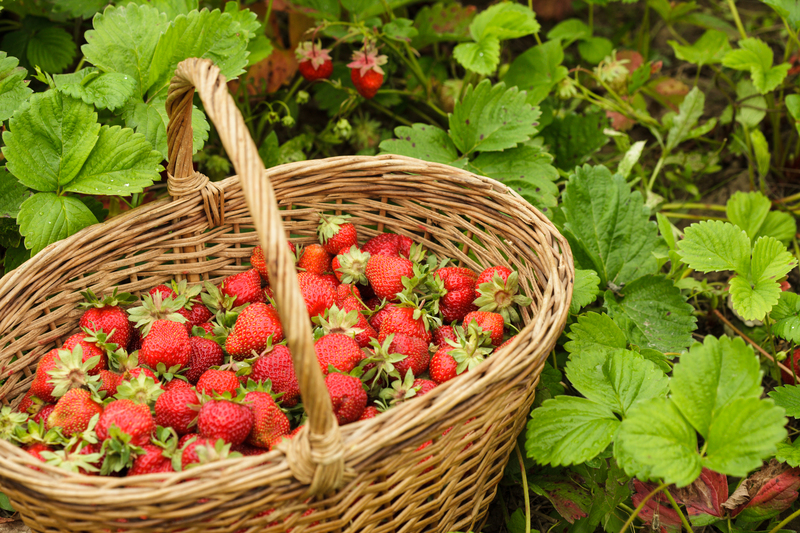Transform Your Garden into a Winter Haven for Plants
Posted on 08/06/2025
Transform Your Garden into a Winter Haven for Plants
As temperatures drop and the days become shorter, gardeners face the unique challenge of keeping their landscapes thriving. Creating a winter haven for plants not only ensures their survival, but can also provide beauty and interest throughout the coldest months. In this comprehensive guide, we'll show you how to transform your garden for winter, offering tips to protect, nurture, and cultivate a sanctuary for your green companions when they need it most.
Why Your Plants Need a Winter Haven
Plants, just like us, feel the impact of winter's chill. Frost, freezing winds, and heavy snow can damage or even kill unprotected flora. Protecting your garden in winter isn't just about survival -- it's about enabling your landscape to flourish come spring. Investing effort now pays off with healthier, more vigorous plants later.
Major Risks for Plants in Winter
- Frost Damage: Freezing temperatures can rupture plant cells and cause blackened leaves.
- Dehydration: Cold, dry winds and frozen ground make it hard for roots to absorb moisture.
- Root Freezing: Extended exposure to cold soil can kill even hardy perennials.
- Snow Buildup: The weight of snow can break branches and deform plants.

Steps to Transform Your Garden into a Winter Sanctuary for Plants
From simple adjustments to clever landscaping, you can turn your yard into a veritable winter refuge for your botanical friends. Let's explore actionable strategies that ensure your plants emerge vibrant and healthy at winter's end.
1. Assess and Prepare Your Garden
- Identify Vulnerable Plants: Take stock of your garden. Which species are winter-hardy, and which need extra care?
- Remove Dead Material: Clear away diseased or dead plant matter to prevent pest and fungal problems.
- Plan Windbreaks: Use fences, evergreen shrubs, or garden screens to reduce exposure to cold winds.
2. Offer Shelter with Protective Structures
A key element of any winter garden haven is shelter. Here's how to safeguard even delicate specimens from winter's wrath:
- Cold Frames: These small glass or plastic structures are ideal for tender seedlings or vegetables.
- Cloche Covers: Individual covers -- from glass bells to plastic domes -- work wonders for small or container plants.
- Greenhouses: Investing in a greenhouse not only shields sensitive plants, but also extends your growing season.
- Floating Row Covers: Lightweight fabrics can be draped over beds for frost protection while letting in light and rain.
3. Use Mulch for Insulation
Mulching is one of the easiest ways to create a winter sanctuary for plants. A layer of organic material both insulates roots and regulates soil moisture and temperature.
- Bark Chips and Wood Mulch: Slow to decompose and provide long-lasting cover.
- Straw or Leaf Mulch: Great for vegetable gardens and flower beds; remove in spring to avoid rot.
- Pine Needles: An excellent, lightweight option for acid-loving plants like blueberries and rhododendrons.
4. Water Wisely
Winter often brings less evaporation, but that doesn't mean your plants don't need moisture. Plants in dormancy still absorb water on mild days.
- Water Before Frost: Give your garden a deep watering before the ground freezes, especially for evergreens.
- Monitor Container Plants: Potted plants dry out more quickly. Check often and water when soil is dry to the touch.
- Avoid Overwatering: Damp, cold soils encourage rot. Ensure excellent drainage and only water when necessary.
5. Choose the Right Plants for Winter Interest
One way to easily transform your outdoor space into a winter plant sanctuary is to select species that provide beauty in the off-season. Here are some stellar choices:
- Evergreens: From stately conifers to dwarf boxwoods, evergreen plants offer year-round color and structure.
- Winter-Bloomers: Hellebores, witch hazel, and camellias bloom against the snow for a splash of color.
- Berry Producers: Hollies, winterberry, and pyracantha offer food for wildlife and vibrant red, orange, or yellow fruit.
- Plants with Interesting Bark: Dogwoods, birch, and Stewartia feature striking stems or bark that stand out when leaves have fallen.
Overwintering Potted Plants and Exotics
Container plants and tropicals are especially vulnerable to frost. Learn how to build a winter refuge for tender plants by following these techniques:
- Move Indoors: Relocate fragile potted specimens to a cool but frost-free, well-lit spot.
- Insulate Pots: Wrap containers in bubble wrap, fleece, or hessian to reduce freezing risk.
- Group Pots Together: Clustering creates a mini microclimate by reducing heat loss from soil and roots.
- Elevate from Ground: Place pots on feet or bricks to prevent sitting in icy water and encourage drainage.
Harness the Power of Microclimates
Every garden contains microclimates -- areas that are slightly warmer or more sheltered than the rest. Identifying and exploiting these can be the secret to turning your winter garden into a plant haven.
Where to Find Microclimates
- South and West-Facing Walls: These radiate heat during the day, offering a few degrees of protection.
- Under Large Trees: Overhanging branches can protect understory plants from frost.
- Behind Hedges and Fences: Barriers block cold winds, creating cozy corners.
- Near Buildings: Residual indoor heat slightly raises temperature close to houses or garages.
Seasonal Maintenance for a Winter-Proof Garden
Routine winter maintenance helps you transform your backyard into a protected haven for garden plants.
Checklist for Winter Garden Care
- Prune Safely: Remove dead or damaged wood before heavy snow can cause further harm. Don't prune too late, as cuts can be vulnerable to frost.
- Check for Pests: Slugs, aphids, and fungal diseases can lurk in winter. Inspect and treat as needed.
- Monitor Covers and Ties: Secure any protective sheets or frames after storms and heavy wind.
- Feed Sparingly: Hold off on fertilizing until spring; feeding encourages soft growth vulnerable to cold.
Encouraging Wildlife for a Balanced Winter Garden
Don't forget the beneficial wildlife that helps create a lively, healthy garden ecosystem, even in winter!
- Install Bird Feeders: Attract insect-eating birds that will keep pests in check come spring.
- Leave Some Seedheads: Plants like echinacea and rudbeckia provide natural food for birds and bring architectural interest.
- Add a Water Source: A heated bird bath or shallow dish with fresh water is a lifeline when everything else freezes.
- Create Brush Piles: A sheltered log or twig pile offers insect and small mammal shelter.
Common Mistakes When Creating a Winter Refuge for Plants
Even the most seasoned gardener can make errors in cold-weather preparation. Avoid these pitfalls for the best winter garden transformation:
- Neglecting Drainage: Waterlogged soil contributes to root rot -- elevate beds or improve soil structure if drainage is poor.
- Leaving Pots on Concrete: Concrete can freeze and damage roots. Use pot feet or move pots onto insulating surfaces.
- Over-Insulating: While protection is essential, trapping too much humidity can cause fungal growth or crown rot.
- Forgetting to Vent: Cold frames and greenhouses need regular airing to prevent disease build-up, even in winter.
Top Tips to Truly Transform Your Garden for Winter Resilience
- Layer Multiple Protections: Combine mulch, windbreaks, and covers for maximum safety.
- Emphasize Diversity: Mix evergreens, perennials, bulbs, and shrubs to keep your winter garden engaging and balanced.
- Design for Structure and Texture: Use garden art, architectural plants, and hardscaping to provide interest when flowers fade.
- Monitor Weather Forecasts: Stay ahead of early frosts or snow, applying extra protection as needed.

Ready to Create Your Own Winter Sanctuary for Plants?
Turning your garden into a winter haven for plants takes planning, creativity, and a bit of effort -- but the rewards are year-round beauty and healthier, more resilient plants. By combining practical protections with smart plant choices and ongoing care, you'll ensure your garden is not only a place of refuge for your favorite greenery but also a vibrant, living space to enjoy no matter the season.
Conclusion
Don't let winter's cold take the life out of your landscape! With the strategies outlined above, you can transform your backyard into a winter sanctuary for plants, ensuring their survival and continued beauty. Whether you're a novice gardener or a seasoned pro, these proven methods will help your garden thrive when everything else seems to slumber. Start preparations today, and greet spring with a garden that's healthier, more diverse, and more beautiful than ever before.

